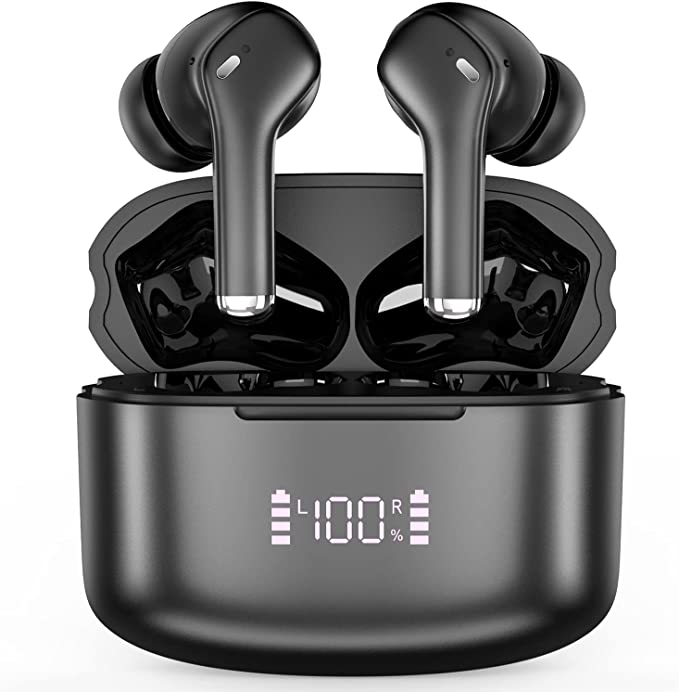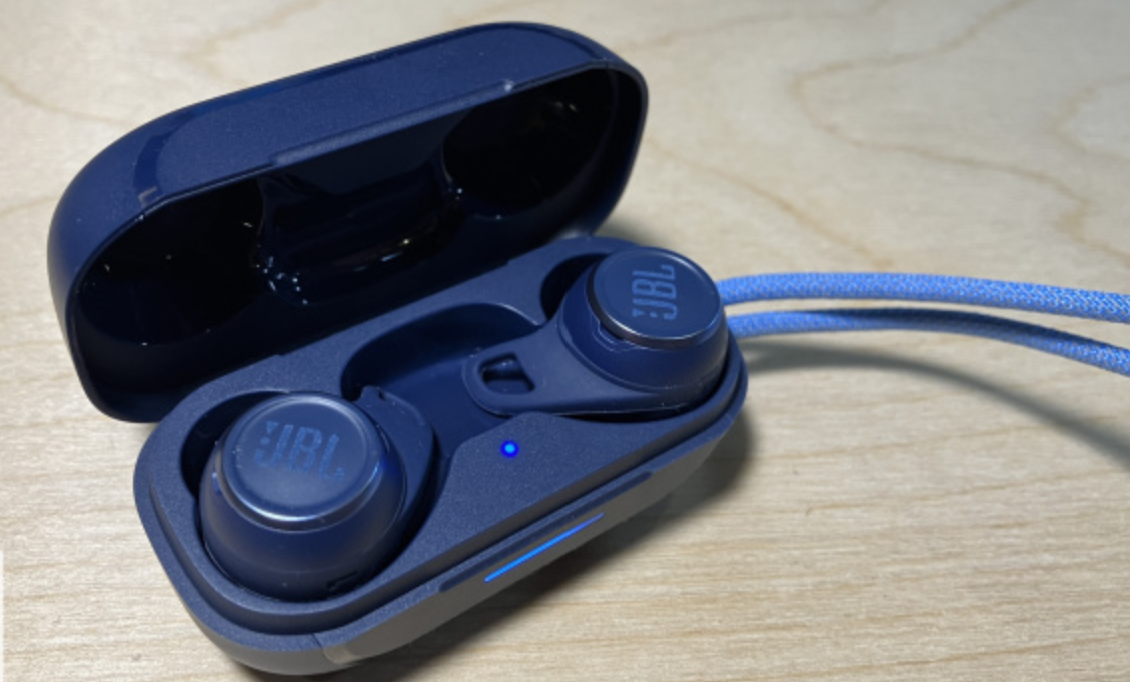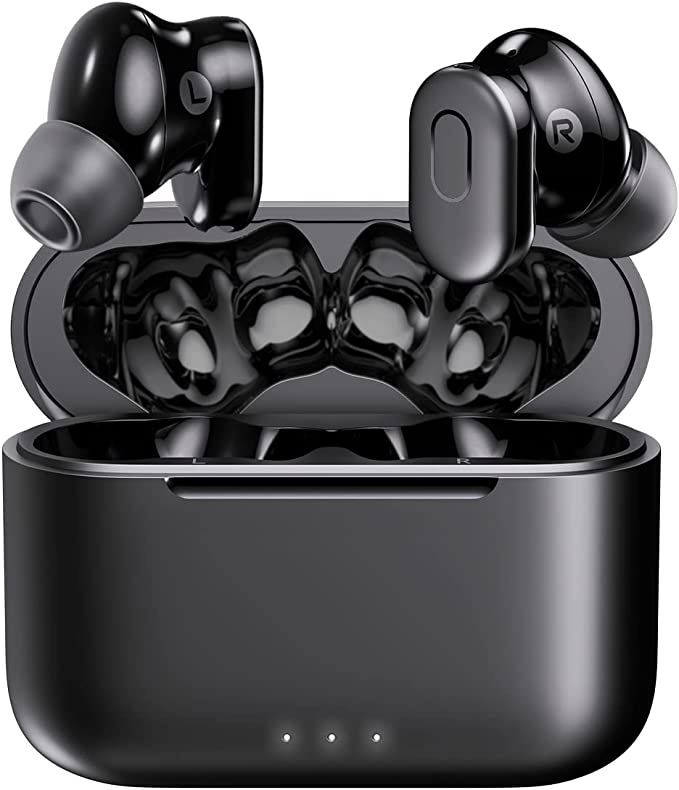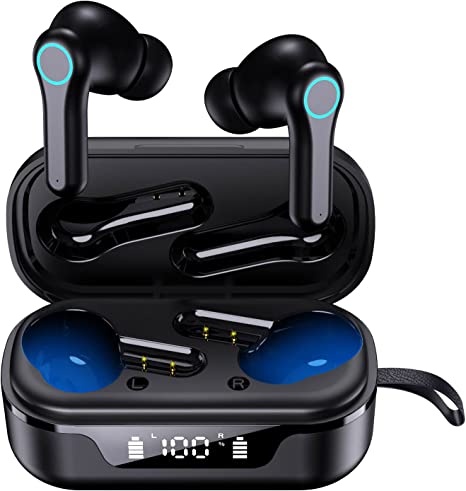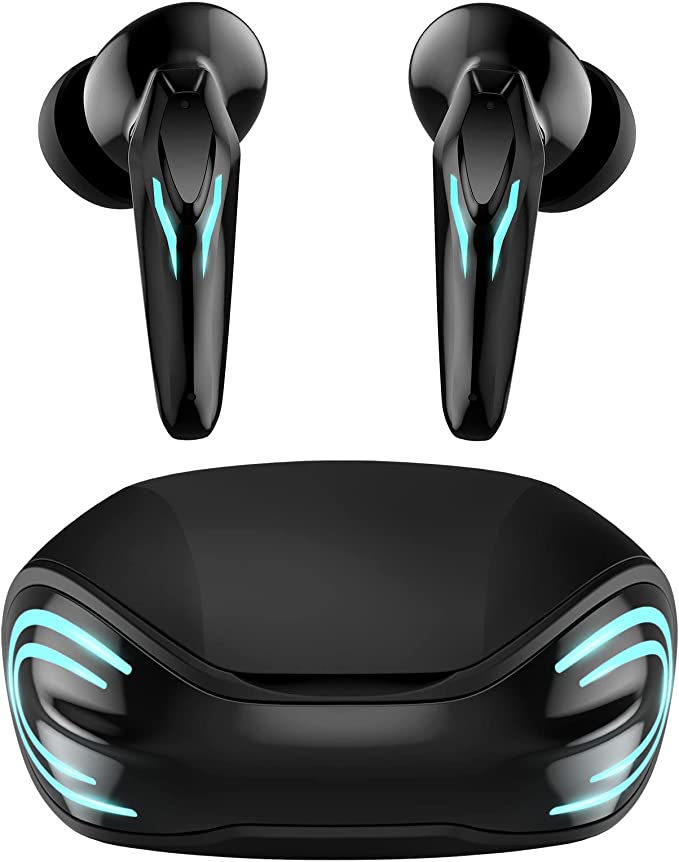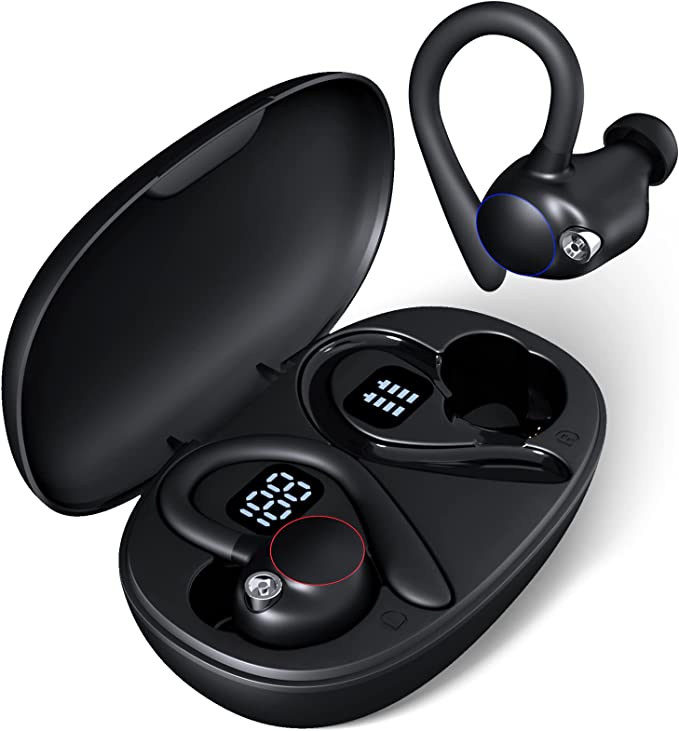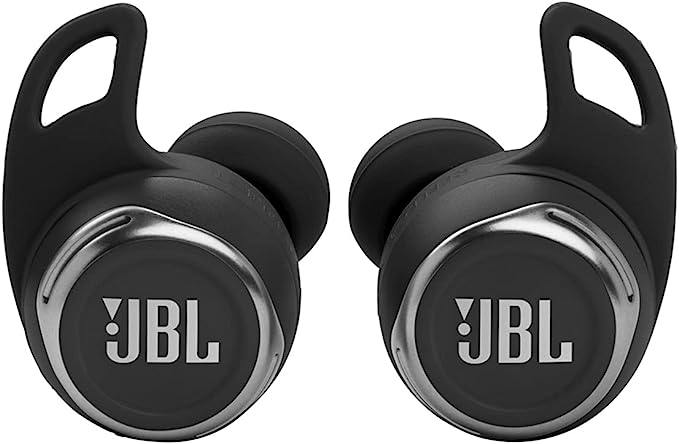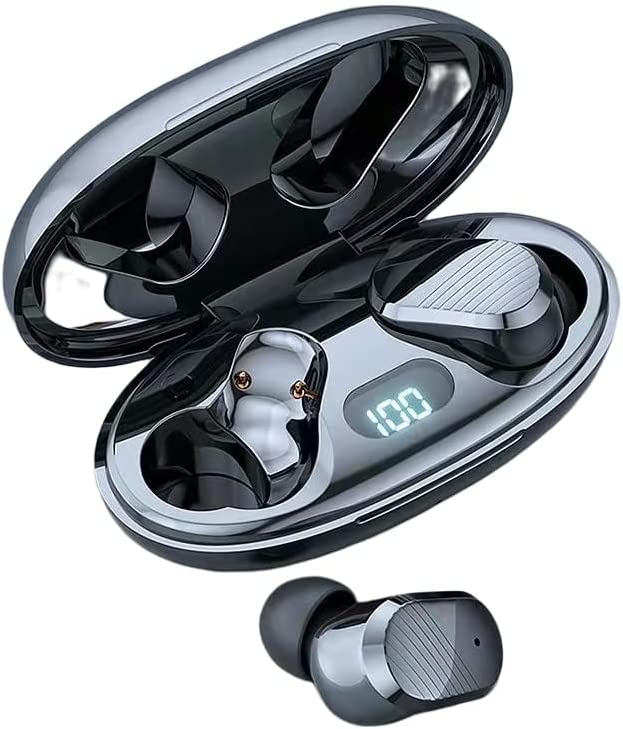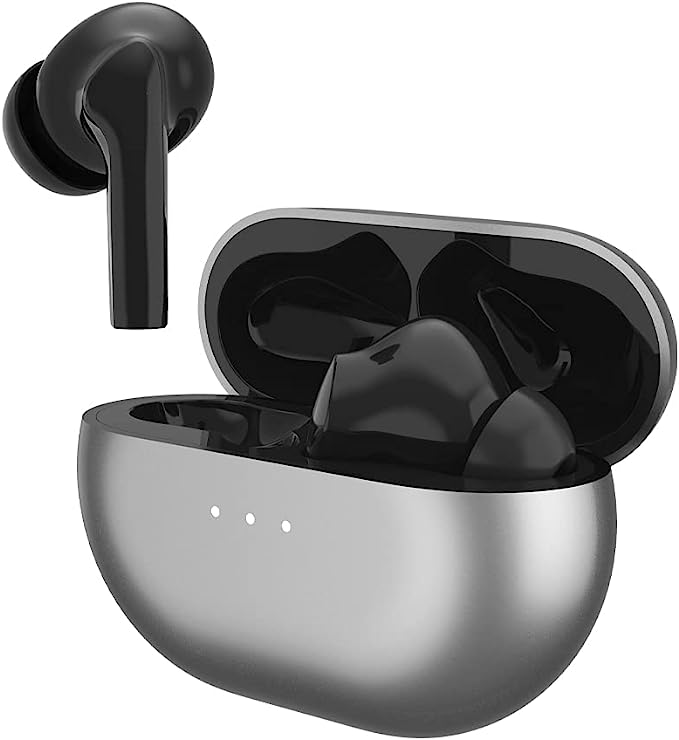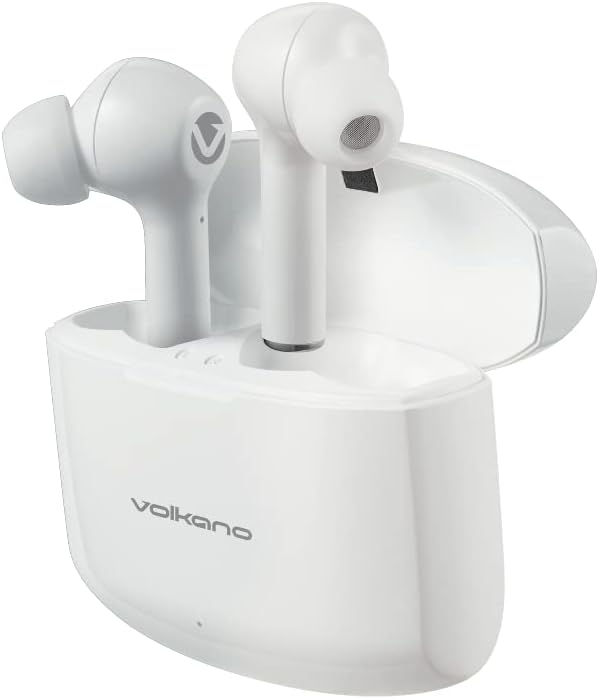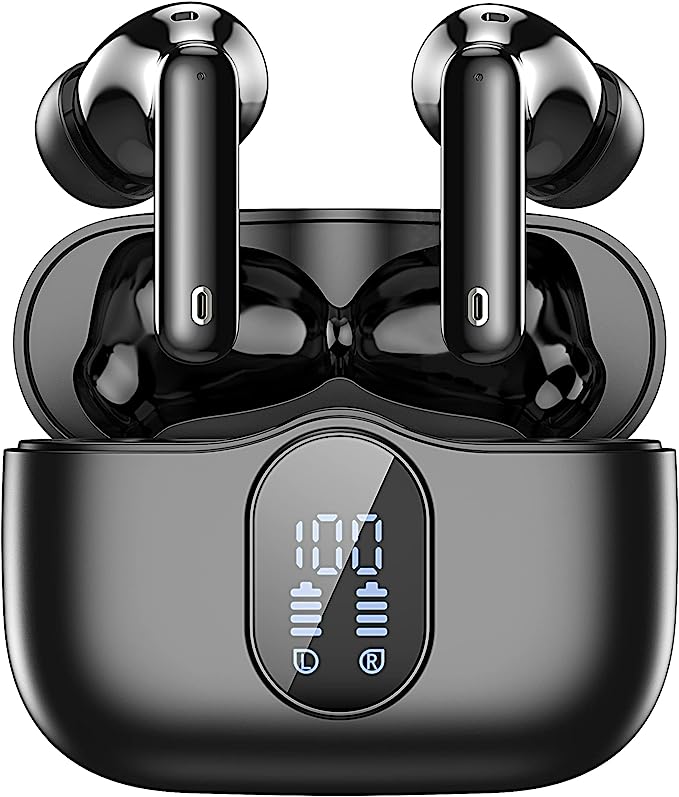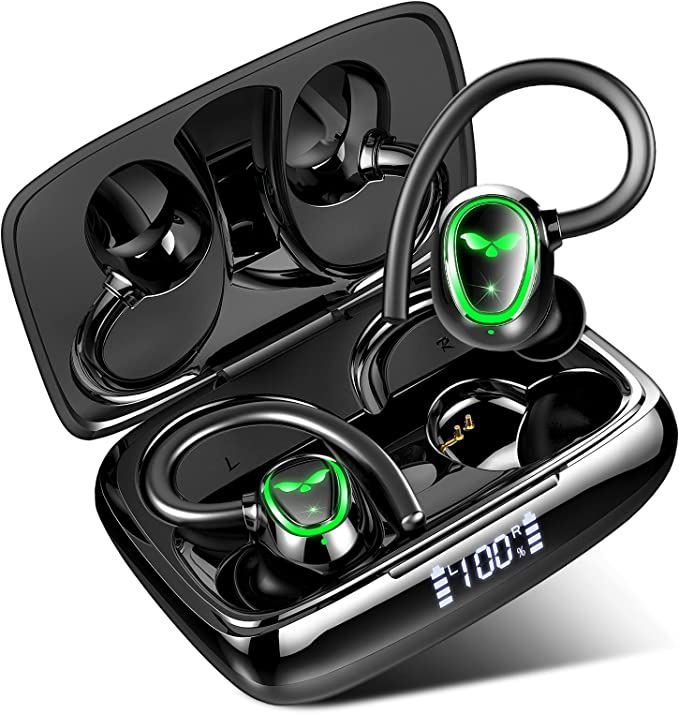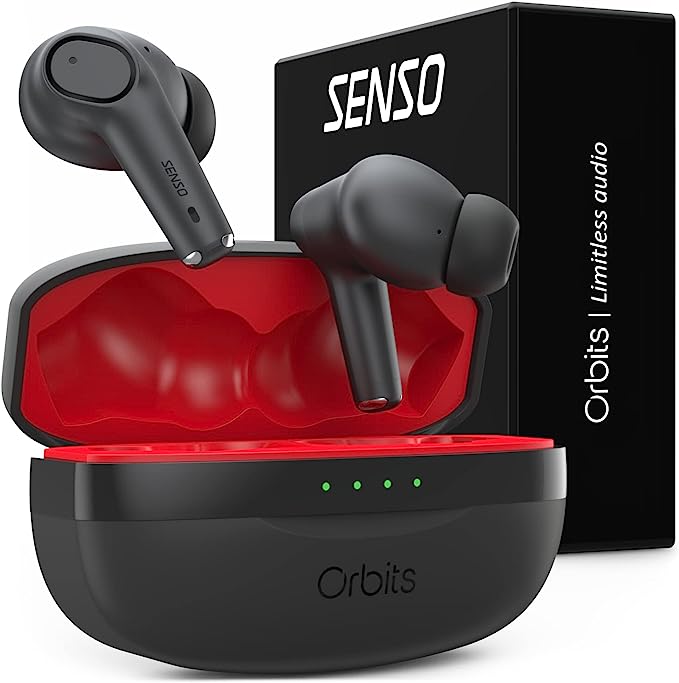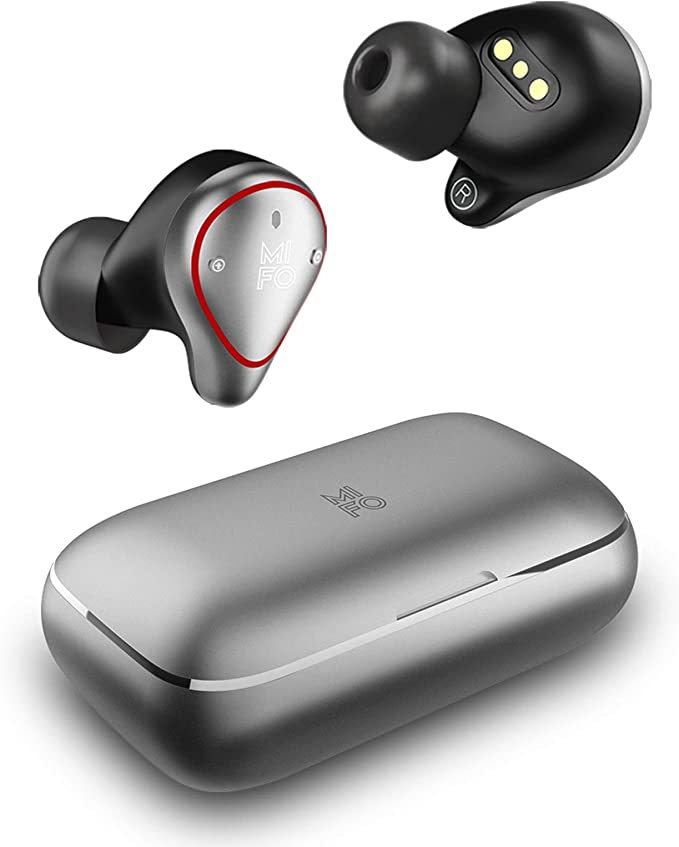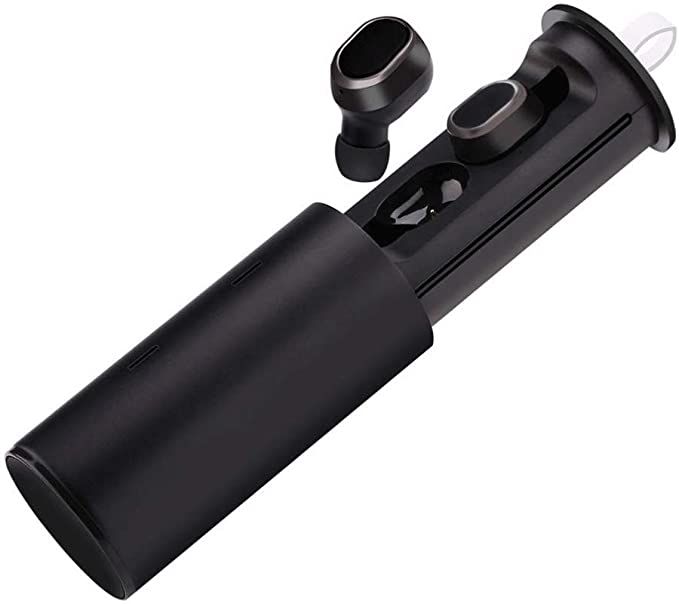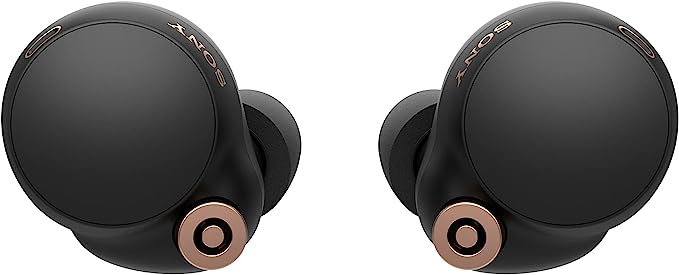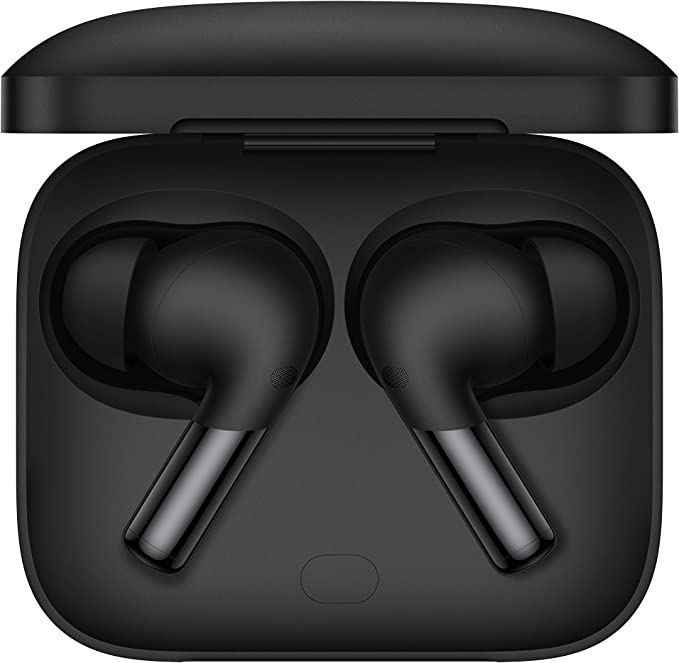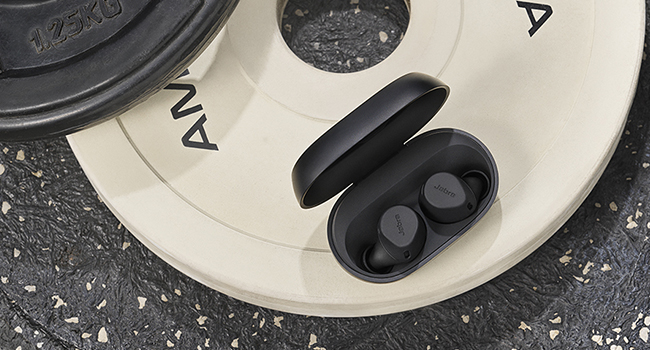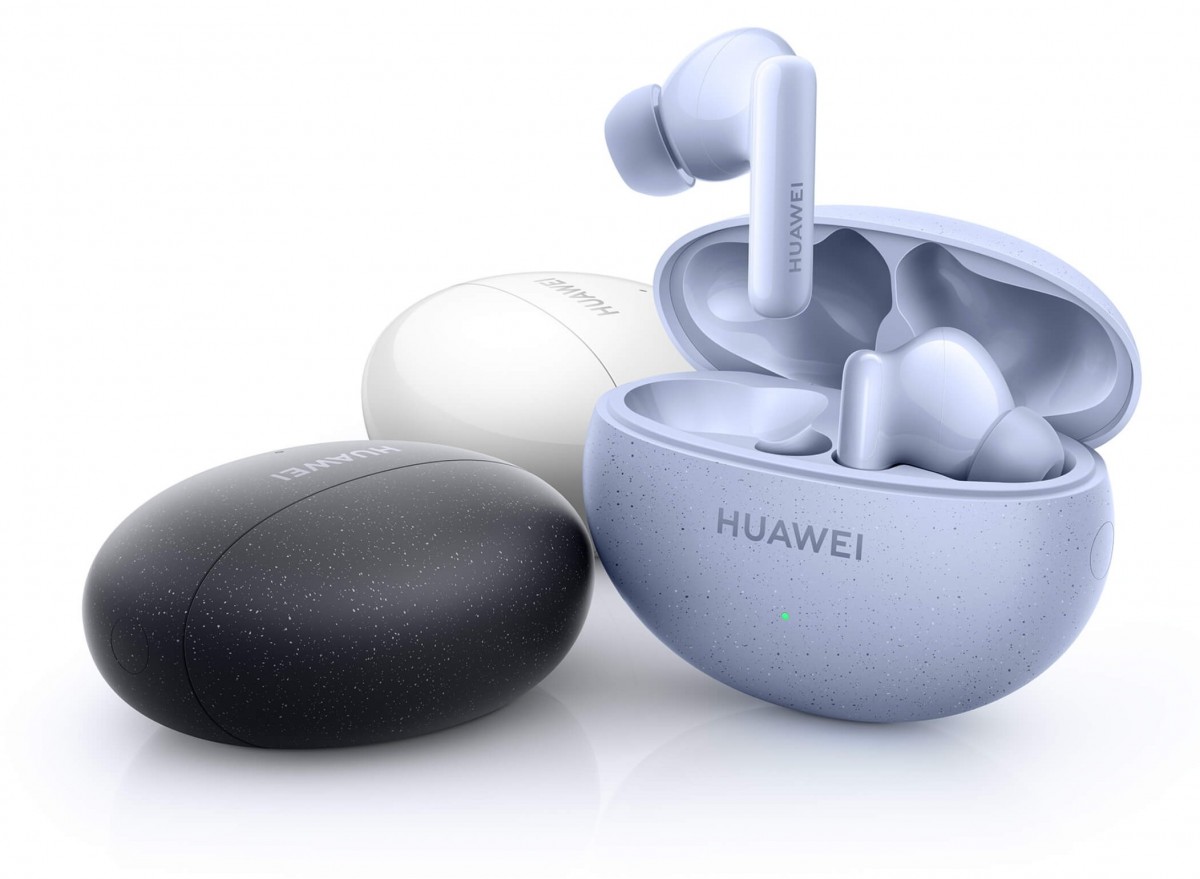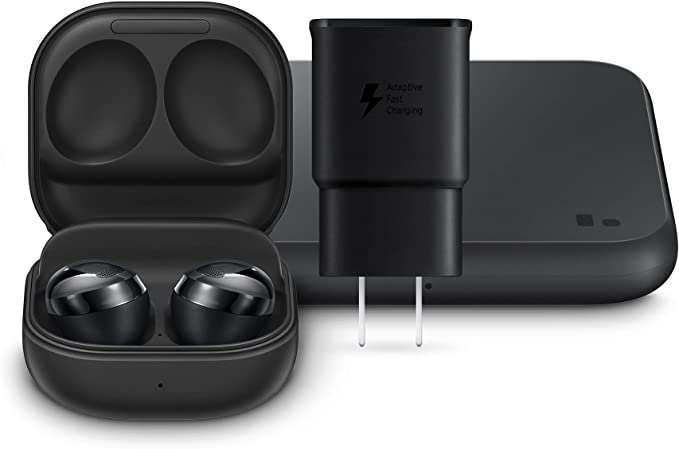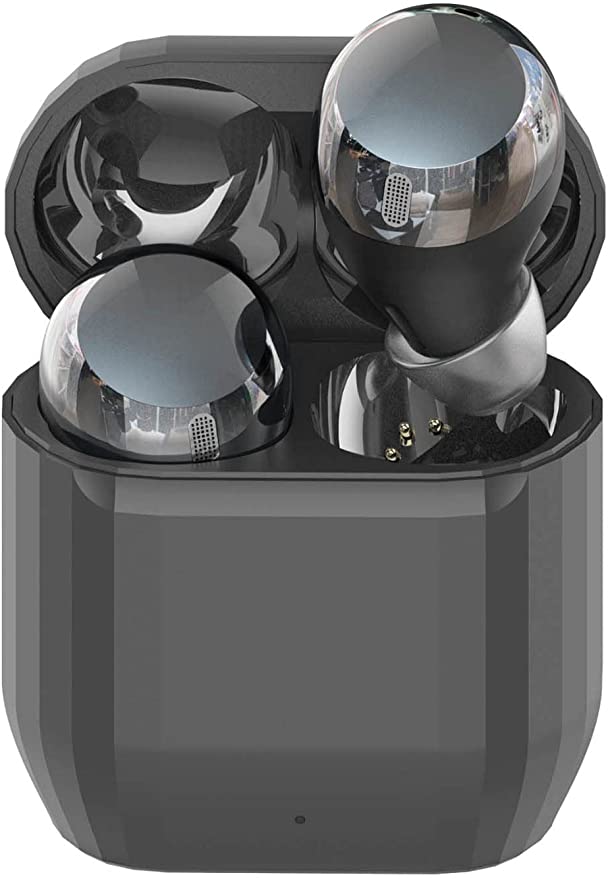Ausounds AU-Stream ANC: The Engineering Behind Accessible Noise Cancellation
Update on July 1, 2025, 5:12 p.m.
Have you ever found yourself on a bustling commute, yearning for a quiet oasis where your favorite podcast or music can truly shine? Or perhaps you’ve been in a crowded café, trying to focus, but the cacophony of conversations just won’t let you concentrate? This desire for peace in a noisy world is precisely what technologies like Active Noise Cancellation (ANC) aim to address, and it’s a feature that became increasingly accessible with products like the Ausounds AU-Stream ANC True Wireless Bluetooth Noise Cancelling Earbuds. While the AU-Stream ANC is no longer in production, its design offers a fascinating case study in how complex audio engineering finds its way into everyday tech, balancing ambition with practicality. Let’s dive into the science that made these earbuds tick.

Unveiling the Sound Curtain: How Active Noise Cancellation Works
Imagine a world where you could simply “cancel” unwanted noise. While it might sound like science fiction, this concept has been a reality for decades, with roots tracing back to figures like Paul Lueg in the 1930s and significant advancements by companies like Bose in later years for aviation headsets. The Ausounds AU-Stream ANC employs a fundamental principle known as feed-forward active noise cancellation. Think of it like this:
Your earbuds are equipped with tiny, sensitive microphones strategically placed on their outer surface. These microphones act as “ears” for the earbud itself, constantly listening to the ambient sounds in your environment – the low rumble of a bus, the hum of an air conditioner, or even the distant chatter in an office. When these microphones pick up an unwanted sound wave, the earbud’s internal processing unit springs into action. It swiftly analyzes the incoming sound and, with remarkable speed, generates a new sound wave. The clever part? This newly generated wave is an almost perfect mirror image of the unwanted noise. In technical terms, it’s inverted in phase by 180 degrees.
Now, here’s where the magic of physics comes in. When this “anti-noise” wave is emitted by the earbud’s speaker and meets the original unwanted noise wave in your ear canal, they interfere with each other. Because they are precisely out of phase, they effectively cancel each other out, reducing the overall amplitude of the sound reaching your eardrum. It’s like two identical ripples on a pond meeting and flattening each other out.
The Ausounds AU-Stream ANC promises a noise reduction of -25dB. To put that into perspective, a 10-decibel reduction is typically perceived by the human ear as halving the loudness of a sound. So, -25dB is a substantial cut, meaning those persistent background noises become significantly quieter, allowing your music or calls to take center stage. While some users noted it might reduce about two-thirds of the noise compared to premium alternatives, this level of attenuation can still transform a noisy commute into a much more serene experience, making a tangible difference in perceived comfort and audio clarity.

The Heartbeat of Sound: Engineering with Titanium Drivers
Every sound we hear from an earbud originates from a tiny component called a driver. This miniature transducer is responsible for converting electrical signals into audible sound waves. The quality and characteristics of a driver are heavily influenced by its design and, crucially, the materials used in its construction. The Ausounds AU-Stream ANC stands out with its 13mm AU Titanium composite film drivers.
Why titanium? This element isn’t just for aerospace or medical implants; it’s a fantastic material for audio diaphragms due to its unique properties. Titanium boasts an exceptional stiffness-to-weight ratio. Imagine a ballerina trying to perform a complex routine: they need to be both agile (lightweight) and precise (rigid). A driver’s diaphragm is similar. It needs to move incredibly fast and accurately in response to the electrical impulses that dictate the sound. A lightweight diaphragm means it can respond quickly to rapid changes in the audio signal, ensuring crisp highs and transient details. Its rigidity, on the other hand, prevents the diaphragm from deforming or “flexing” unnecessarily when vibrating, which would introduce distortion and muddy the sound. The “three-layer” design further enhances this rigidity while potentially maintaining flexibility for different frequency responses.
With a 13mm size, these drivers are relatively large for in-ear headphones. Generally, larger drivers can move more air, which often translates to a more impactful and deeper bass response. The specified frequency range of 20Hz - 20KHz covers the entire spectrum of human hearing, from the lowest rumbling bass (20 Hertz, like the deepest pipe organ notes) to the highest shimmering treble (20,000 Hertz, beyond what most adults can hear). This ensures that theoretically, no part of your music’s sonic landscape is lost. However, the final sound signature also depends heavily on the acoustic tuning – how the manufacturer designs the enclosure and processes the audio signals. While many users praised the clarity, some did note a perceived lack of very deep bass or a slightly “harsh” quality in the higher frequencies, particularly with classical music. This highlights that while material science provides the foundation, meticulous acoustic engineering is what truly shapes the listener’s experience.

Powering Freedom: The Science of Wireless Charging and Endurance
The promise of “true wireless” isn’t just about cutting the cord to your phone; it’s also about untethering from the charging cable as much as possible. The Ausounds AU-Stream ANC addressed this with a practical power solution: 5 hours of talk and music playback from the earbuds themselves, complemented by an additional 15 hours of charge stored within its pocket-sized case, culminating in a total of 20 hours of combined battery life. This means you can get through multiple workdays or long flights without needing to find an outlet.
But the real convenience innovation here is the rapid wireless charging case. This feature relies on the principle of electromagnetic induction, famously utilized by the Qi standard (a common wireless charging protocol). Inside the charging pad (which you’d typically buy separately) and within the earbud case are tightly wound coils of wire. When electricity flows through the coil in the charging pad, it generates an oscillating magnetic field. This fluctuating magnetic field, when in close proximity to the coil in the earbud case, induces an electrical current in the case’s coil. This induced current is then used to charge the earbuds’ internal lithium-ion batteries.
This inductive coupling eliminates the need for fiddly cables, turning charging into a simple “place and go” affair. For users on the move, this seamless top-up capability can be a game-changer, ensuring your earbuds are always ready when you are. It exemplifies how advancements in energy transfer technology enhance the user experience by reducing friction and adding a layer of effortless convenience.

Seamless Harmony: Decoding the Master Dual Switch
In the early days of true wireless earbuds, you often had a “master” earbud that connected to your phone, and a “slave” earbud that connected to the master. This setup could sometimes lead to connectivity quirks or limitations when using only one earbud. The Ausounds AU-Stream ANC tackled this with its Master Dual Switch technology.
This feature is a testament to the continuous evolution of Bluetooth connectivity and smart sensor integration in personal audio. Essentially, the earbuds are designed to automatically detect which unit is currently in your ear, or if both are active, and intelligently manage the audio routing and microphone reception. If you take one earbud out, the system automatically switches to a mono listening mode on the remaining earbud, without you needing to manually adjust settings on your device. Conversely, when you put the second earbud back in, it seamlessly transitions back to stereo playback.
This smart switching isn’t just about convenience; it also optimizes power consumption and enhances versatility. Imagine you’re cycling or walking in a city, and you want to listen to music but also remain aware of your surroundings for safety. You can simply use one earbud. Or perhaps you’re on a long conference call and one earbud’s battery is running low; the Master Dual Switch allows the other to take over without interruption. While some users reported occasional disconnection issues with head motion or temporary volume balance drifts, which can be common challenges in the complex radio frequency environment of Bluetooth devices, the underlying intent of the Master Dual Switch was to create a more fluid, adaptive, and truly wire-free user experience.

Beyond the Specs: The Human Element and Engineering Trade-offs
The journey of any consumer electronics product, especially one aiming for accessibility like the Ausounds AU-Stream ANC, is a fascinating study in engineering trade-offs. Priced initially between $120 and $150, eventually dropping to $27-$68, these earbuds sought to bring advanced features to a broader market. However, this ambition often necessitates compromises, and user feedback provides invaluable insights into these real-world implications.
For example, while the 13mm titanium drivers promised rich sound, some users observed a lack of impactful bass or a slight harshness in high frequencies. This could be attributed to various factors: the specific tuning decisions made to optimize for a wide range of content, or perhaps the limits of the chosen material and its interaction with the earbud’s internal acoustics given the production budget. Achieving truly “flat” or universally pleasing audio is an immense challenge. Similarly, the -25dB ANC was deemed effective, but not on par with premium offerings, suggesting that the cost-benefit analysis led to a “good enough” rather than “best-in-class” solution for noise reduction. The sophistication of ANC relies on multiple microphones, powerful processing, and intricate algorithms – all of which add to cost.
User comments about the earbuds feeling “a little large in your ears” or the case feeling “dollar store cheap” point to the ergonomic and industrial design considerations. The fit of in-ear monitors is highly personal due to the wide variation in ear canal shapes, making universal comfort a constant design puzzle. Material choices for the case, while impacting the tactile “fit and finish,” are often directly linked to manufacturing costs.
Even the reported “soft buzzing/crackling sound when noise canceling is turned on” in the left earbud, or occasional “pops and clicks” and “balance drifting,” speaks to the inherent complexities of wireless communication and miniature electronics. Radio frequency interference, subtle component variations, or firmware glitches can manifest as these frustrating audio artifacts. The product’s eventual discontinuation, roughly two years after its initial release, is a common occurrence in the fast-paced consumer electronics market, where rapid innovation and fierce competition mean even innovative products might have a relatively short lifespan if they can’t capture a sustained market share or meet evolving consumer expectations perfectly.
These user experiences, ranging from satisfaction with battery life and basic functionality to frustration with fit and audio imperfections, provide a crucial feedback loop. They highlight that even with clever engineering and advanced materials, the ultimate success of a product lies in how well it harmonizes these elements to create a seamless, reliable, and comfortable experience for the diverse human ear.
The Legacy of Innovation: What the AU-Stream ANC Taught Us
The Ausounds AU-Stream ANC, like many products in its category, was a microcosm of broader trends in personal audio: the relentless pursuit of wireless freedom, the integration of intelligent features like active noise cancellation, and the continuous effort to deliver high-quality audio in increasingly compact forms. It demonstrated that even at more accessible price points, consumers could enjoy technologies once reserved for high-end devices.
By dissecting its features – the science of active noise cancellation that sculpts your listening environment, the material engineering behind its titanium drivers that faithfully reproduce sound, the electromagnetic marvel of wireless charging that simplifies power, and the smart algorithms that govern its seamless connectivity – we gain a deeper appreciation for the intricate dance of physics, materials science, and software engineering. The Ausounds AU-Stream ANC wasn’t just a pair of earbuds; it was a tangible example of how complex scientific principles are engineered into solutions that enhance our daily lives, proving that true innovation often lies in making advanced technology both powerful and, crucially, accessible.
